You have no items in your shopping basket.
Key facts and statistics
- According to the Health and Safety Executive (HSE), slips, trips, and falls are the most common cause of injuries in early years settings, accounting for over 50% of reported incidents (HSE, 2023).
- The Reporting of Injuries, Diseases and Dangerous Occurrences Regulations (RIDDOR) 2013 require early years providers to report certain types of work-related accidents, injuries, and dangerous occurrences.
- Research by the Early Years Alliance (2022) found that only 65% of early years providers had fully compliant accident and incident reporting procedures, highlighting the need for more robust systems.
These statistics underscore the critical importance of having a well-implemented Accident and Incident Reporting Policy to safeguard children and staff and maintain compliance.
What is an Accident and Incident Reporting Policy?
An Accident and Incident Reporting Policy outlines the procedures for recording, reporting, and investigating accidents, injuries, and near-miss incidents that occur in early years settings. The policy ensures that incidents are documented and reported in line with regulatory requirements and that any necessary actions are taken to prevent recurrence.
Key components of the policy include:
- Procedures for recording accidents and incidents
- Guidelines for reporting incidents to external agencies such as the HSE or local authorities
- The role of staff in ensuring accurate reporting and documentation
- Investigation protocols to identify the root cause of incidents
- Measures to prevent future accidents and incidents.
Legislation and regulatory framework
Several pieces of legislation and statutory guidance govern accident and incident reporting in early years settings:
- The Reporting of Injuries, Diseases and Dangerous Occurrences Regulations (RIDDOR) 2013 - These regulations require early years providers to report serious accidents, injuries, and dangerous occurrences to the HSE. This includes fatalities, major injuries, and accidents resulting in hospitalisation.
- The Health and Safety at Work Act 1974 - This Act places a legal duty on early years providers to ensure the health and safety of children, staff, and visitors by preventing accidents and reducing risks in the workplace.
- The Early Years Foundation Stage (EYFS) Framework - The EYFS mandates that all early years providers must keep records of accidents and injuries and notify parents or carers of any incidents involving their children.
- The Control of Substances Hazardous to Health (COSHH) Regulations 2002 - These regulations ensure that accidents involving hazardous substances are reported and managed appropriately, with clear protocols for handling dangerous materials.
Key elements of an accident and incident reporting policy
To ensure compliance and protect the safety of children and staff, early years providers should include the following elements in their Accident and Incident Reporting Policy:
- Clear reporting procedures - The policy must outline step-by-step procedures for staff to follow when an accident or incident occurs. This includes completing an accident report form, notifying parents or guardians, and, if necessary, escalating the incident to external authorities such as the HSE under RIDDOR.
- Accident and incident log - All accidents, injuries, and near misses should be recorded in a dedicated log. This log should include the date, time, and location of the incident, as well as details of the individuals involved, the nature of the injury, and any treatment provided.
- Notification and communication - Early years settings must notify parents or carers immediately following an accident involving their child. The policy should specify how and when this communication will take place, whether through phone calls, emails, or written reports.
- Investigating incidents - The policy should include a process for investigating accidents and incidents to identify the root cause and prevent recurrence. This may involve conducting a risk assessment, interviewing witnesses, and reviewing the environment where the incident occurred.
- Training for staff - Staff must be trained to respond appropriately to accidents and incidents, including administering first aid, completing accident reports, and recognising when to escalate an incident to external authorities. Regular refresher training should be provided to ensure staff are up to date with the latest best practices.
- Health and safety measures - The policy should outline proactive health and safety measures designed to minimise the risk of accidents. This includes conducting regular risk assessments, maintaining equipment, and ensuring that the environment is safe and free from hazards.
- RIDDOR reporting - The policy must detail when and how to report accidents to the HSE under RIDDOR, including the timeframes for reporting fatalities, major injuries, and dangerous occurrences.
Best practice for implementation
To implement an effective Accident and Incident Reporting Policy, early years providers should follow these best practices:
- Regular risk assessments - Conduct routine risk assessments to identify potential hazards and reduce the likelihood of accidents. This includes assessing indoor and outdoor environments, play equipment, and any substances used in the setting.
- Staff training and awareness - Ensure that all staff members are trained in accident and incident reporting procedures, including how to complete documentation, administer first aid, and follow up with parents or carers. Provide refresher courses to keep staff up to date.
- Prompt reporting and investigation - Encourage staff to report accidents and incidents immediately and investigate them promptly. A quick response allows for thorough investigations and timely implementation of corrective measures.
- Involve parents and carers - Keep parents and carers informed about accidents involving their children and any measures being taken to prevent future incidents. Transparency helps build trust and ensures that parents feel confident in the safety of the setting.
- Monitor and review - Regularly review the accident and incident records to identify patterns or recurring issues. Use this data to improve safety measures and update policies where necessary.
Conclusion
An effective Accident and Incident Reporting Policy is essential for safeguarding the health and safety of children, staff, and visitors in early years settings. By adhering to legal requirements, maintaining accurate records, and implementing proactive safety measures, early years providers can create a safer environment and reduce the risk of accidents.
For further guidance on developing and implementing Accident and Incident Reporting Policies, explore how ComplyPlus™ can support your early years setting with comprehensive compliance management tools and training.
Ensure your early years setting is fully compliant with accident and incident reporting regulations. Visit ComplyPlus™ today to learn more about ComplyPlus™ and our complete solutions for managing health and safety, training staff, and ensuring regulatory compliance in early years settings.
The role of ComplyPlus™ in supporting Accident and Incident Reporting Compliance
Managing accident and incident reporting in early years settings requires strict adherence to legislation and best practices. ComplyPlus™ offers a comprehensive solution, providing access to up-to-date policies, procedures, and training resources to ensure full compliance with RIDDOR, EYFS, and health and safety regulations.
With ComplyPlus™, early years providers can manage accident reporting more efficiently, track staff training, and ensure that all incidents are documented and Ensuring Safety and Accountability in Early Childhood settings in line with the latest regulations. The platform simplifies the process of compliance management, allowing providers to focus on maintaining a safe environment for children and staff.
About the author
Anna Nova Galeon
Anna, our wordsmith extraordinaire, plays a pivotal role in quality assurance. She collaborates seamlessly with subject matter experts and marketers to meet stringent quality standards. Her linguistic precision and meticulous attention to detail elevate our content, ensuring prominence, clarity, and alignment with global quality benchmarks.




